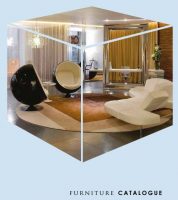Health and safety considerations when fitting out an office…
Whether you are drafting plans for your new office, or you are relocating or redesigning an existing space, there are a few things you will want to consider starting with the look and overall functionality of your office. However, most importantly, you will want to design an office that provides a safe and accident free working environment for you and your employees. The layout of your office is a vital component in your employees’ overall safety, so below are a few tips on how to design a safe and functional office space.
Furniture and equipment placement
One of the first things you will want to consider is where you plan to place your office furniture. When choosing where you place your chairs, desk etc., you will want them to be in areas where the risk of trips and falls are minimal.
Ideally you need to place furniture in areas that allow your staff to conduct their tasks without having to do too much reaching or straining, as well as being set up to meet the ergonomic needs of the user. Items such as filing cabinets and storage bins should be placed in areas with very low foot traffic, and desks should be placed away from high traffic areas to avoid the risk of injuries resulting from bumping into the desks or desk corners.
Pathways and Halls
All hallways and pathways should be kept free from furnishings or unnecessary equipment. Office furnishings such as filing cabinets should never be placed in your halls or pathways as they increase the chance of trips and falls or other accidents should the cabinet drawers be left open. Your hall or pathway should be clear and obstruction free to allow your staff to safely walk through them, especially if they lead to any emergency exits. Furnishings such as chairs small tables or benches should be kept flush against the wall to keep a clear walking path.
Lighting
Proper lighting in an important safety feature in any office setting, as office spaces that are improperly lit have a higher chance of slip and fall related injuries than office spaces with ample lighting. It is also important to make sure that your offices corridors and stairwells are properly illuminated as well.
Emergency exits
Ideally you should have at least 2 emergency exits in your office. However, if your office only has one emergency exit you need to have it positioned in a location where all staff are able to get to it quickly and easily in the event of an emergency. You also need to make sure that the emergency exit is well marked for easy location in times of emergency. Conducting regular fire and emergency drills is another great way to make your staff is aware of what exit(s) to use in the event of an emergency and a drill should certainly be conducted after a refurb to ensure all staff are aware of the new layout.
Floors
Carpets are a very popular choice when it comes to office flooring for a variety reasons such as insulation and noise reduction, and they also provide a cushioned and slip free surface for your staff to walk on. If you do choose carpet for your office flooring you must make sure that it is vacuumed and shampooed regularly to reduce potential allergens that tend to live in carpeted areas. In addition to this, Vinyl, laminate and other hard surface flooring options should be fitted with anti-slip materials such as walk-off mats to keep the floor dry especially during the wet and winter months as this will substantially reduce the risk of slips and falls.
Taking these steps to ensure a safe and accident free work space will not only provide a safe and stable work environment for you staff it will also reduce potential compensation claims or lawsuits that can arise from work related injuries.


